3104/3105/5052/5182 เป็นตัวแทนของอลูมิเนียมอัลลอยด์เกรดต่างๆ. 3104, 3105, 5052, และ 5182 เป็นสี่วัสดุทั่วไปสำหรับทำกระป๋อง
ในชีวิตประจำวันของเรา, เราเห็นกระป๋องมากมาย, เช่น กระป๋องเบียร์, กระป๋องเครื่องดื่ม, กระป๋องอาหาร, เป็นต้น, แล้วกระป๋องเหล่านี้ทำมาจากวัสดุอะไร? อะไรคือความแตกต่างของพวกเขา?
วัสดุขวดโหลที่เราเคยเห็นมีอยู่สองประเภท:
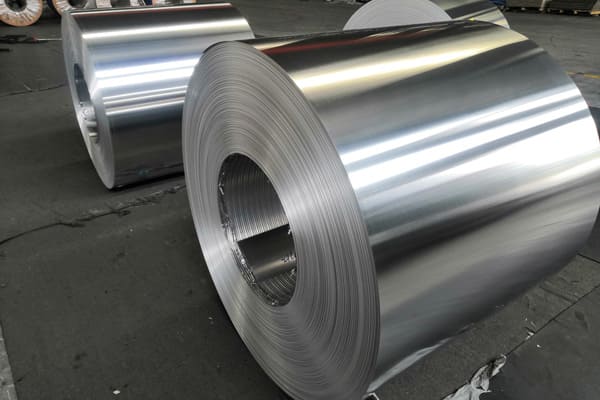
3104 ขดลวดอลูมิเนียม h18 สำหรับกระป๋อง
ประเภทของโลหะผสมที่ใช้โดยทั่วไปในการผลิตกระป๋องอลูมิเนียมคือ 3104 โลหะผสม, 3105 โลหะผสม, 5052 โลหะผสม, 5182 โลหะผสม, เป็นต้น;
กระป๋องโลหะแบ่งออกเป็นกระป๋องสองชิ้นและกระป๋องสามชิ้นตามโครงสร้าง;
กระป๋องสามชิ้นประกอบด้วยสามส่วน: ตัวกระป๋อง, ก้นกระป๋องและฝากระป๋อง;
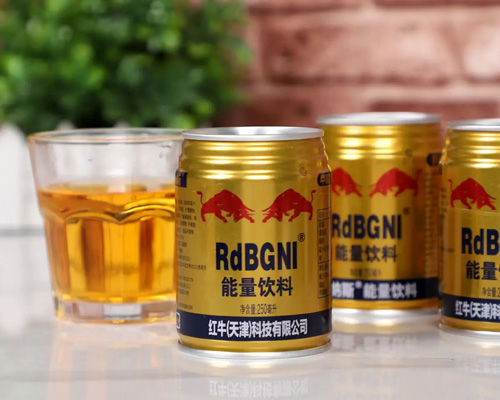
กระป๋องเหล็กวิลาด (สามชิ้น)
กระป๋องสองชิ้นประกอบด้วยสองส่วน: ฝากระป๋องและตัวกระป๋องไร้รอยต่อพร้อมก้น, และตัวกระป๋องและฝากระป๋องถูกบีบ;
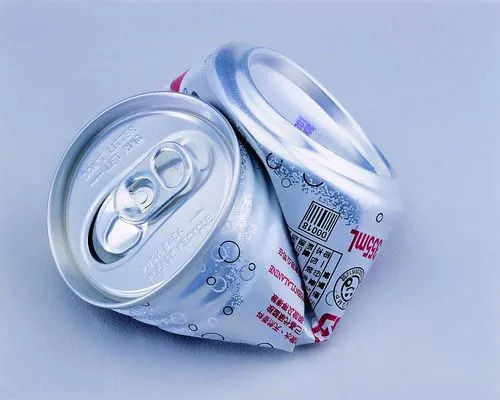
กระป๋องอลูมิเนียม (สองชิ้น)
เมื่อใช้อะลูมิเนียมเป็นวัสดุ, ส่วนใหญ่จะทำเป็นกระป๋องสองชิ้น, และเมื่อใช้เหล็กวิลาดเป็นวัสดุ, ส่วนใหญ่จะทำเป็นกระป๋องสามชิ้น. ความแตกต่างระหว่างสองสิ่งนี้คือกระบวนการผลิตตัวถังเป็นหลัก.
ข้อมูลเพิ่มเติม:แผ่นอลูมิเนียม / ม้วนสำหรับกระป๋อง
3104/3105/5052/5182 เป็นตัวแทนของอลูมิเนียมอัลลอยด์เกรดต่างๆ. 3104, 3105, 5052, และ 5182 เป็นสี่วัสดุทั่วไปสำหรับทำกระป๋อง. มีความแตกต่างในองค์ประกอบทางเคมีและคุณสมบัติทางกายภาพ, แต่สามารถตอบสนองความต้องการที่แตกต่างกันของลูกค้า;
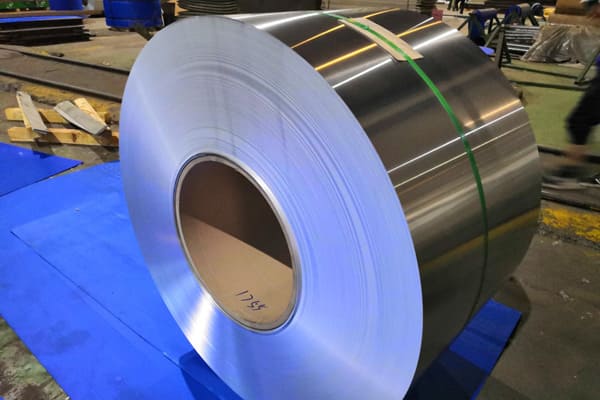
3104 h18 คอยล์อลูมิเนียม
| ล้อแม็ก | ซี | เฟ | ก.ค. | ล้าน | มก | Cr | Zn | ของ | คนอื่น | อัล: นาที. |
| 3104 | 0.60 | 0.80 | 0.05~0.25 | 0.8~1.4 | 0.8~1.3 | – | 0.8~1.3 | – | 0.15 | ส่วนที่เหลือ |
| 3105 | 0.60 | 0.70 | 0.30 | 0.3~0.8 | 0.2~0.8 | 0.20 | 0.40 | 0.10 | 0.15 | ส่วนที่เหลือ |
| 5052 | 0.25 | 0.40 | 0.10 | 0.10 | 2.2~2.8 | 0.15~0.35 | 0.10 | – | 0.15 | ส่วนที่เหลือ |
| 5182 | 0.20 | 0.35 | 0.15 | 0.2-0.5 | 4.0-5.0 | 0.10 | 0.25 | – | 0.15 | ส่วนที่เหลือ |
| ล้อแม็ก | 3104,3105,5042,5052,5182 |
| อารมณ์โกรธ | H18,H19,H48 |
| ความหนา | 0.2-0.35มม. (คอมเมน 0.270 มม,0.280มม.) |
| ความทนทานต่อความหนา | ±0.005มม |
| ความกว้าง | 800-1730มม(คอมเมน 1600mm,1700มม) |
| แอปพลิเคชัน | 3104/3105 H18/H19 สำหรับตัวกระป๋อง,3104/5052/5182 H48 สำหรับฝากระป๋อง |
| 1.ลดช่องว่าง วิธีการที่ทันสมัยสำหรับการผลิตกระป๋องเครื่องดื่มอะลูมิเนียมเรียกว่าการรีดแบบสองชิ้นและการรีดผนัง. เทคนิคเริ่มจากการหลอมอลูมิเนียมซึ่งเปลี่ยนเป็นหล่อได้ประมาณ 30 นิ้ว (เจ็ดสิบหกซม) หนา, แล้วรีดให้เป็นแผ่นบางๆ. ขั้นตอนแรกในการผลิตกระป๋องจริงคือการตัดแผ่นเป็นวงกลม, ที่เรียกว่าสะอาด, เพื่อสร้างด้านล่างและด้านข้างของกระป๋อง. ช่องว่างแต่ละอันคือ 5.5 นิ้ว (14 ซม) มีเส้นผ่านศูนย์กลาง. วัสดุบางอย่างอยู่เสมอ ระลอกเล็ก ๆ บนยอดโลหะเรียกว่า "หู". “ต่างหู” เป็นผลกระทบที่หลีกเลี่ยงไม่ได้ของโครงสร้างผลึกของแผ่นอลูมิเนียม. ระลอกเล็กๆ บนยอดโลหะเรียกว่า "หู". “ต่างหู” เป็นผลกระทบที่หลีกเลี่ยงไม่ได้ของโครงสร้างผลึกของแผ่นอะลูมิเนียม. หายไประหว่างทุกวงกลม, แต่ผู้ผลิตได้ค้นพบว่าอลูมิเนียมขั้นต่ำสูญเสียไปในขณะที่แผ่นมีขนาดใหญ่พอที่จะรักษาสองแถวที่เหลื่อมกันได้ 7 ช่องว่างแต่ละอัน. เกี่ยวกับ 12-14% ของแผ่นจะเสีย, แต่อาจนำกลับมาใช้ใหม่เป็นเศษเหล็กได้. หลังจากตัดรอบทำความสะอาดแล้ว, ไมล์ "ดึง" หรือดึงขึ้นมาเป็นรูปถ้วยสามนิ้วห้านิ้ว (8.เก้าซม) มีเส้นผ่านศูนย์กลาง. |
 |
| 2.วาดถ้วยใหม่ ถ้วยเล็กอันเป็นผลมาจากการจับรางวัลครั้งแรกจะถูกโอนไปยังอุปกรณ์ที่ 2. ปลอกใส่ถ้วยให้อยู่ในตำแหน่งที่เหมาะสม, และหมัดที่ลดลงอย่างรวดเร็วในถ้วยจะวาดใหม่ให้มีเส้นผ่านศูนย์กลางประมาณ 2.6 นิ้ว (6.6 ซม). ยอดถ้วยจะเพิ่มขึ้นพร้อมกันจากเบื้องต้น 1.3 ถึง 2.25 นิ้ว (สาม.สามถึง 5.7 ซม). จากนั้นหมัดจะดันถ้วยตรงข้ามกับเครื่องประดับสามชิ้นที่เรียกว่าเครื่องประดับสำหรับรีดผ้า, ซึ่งยืดและทำให้ผนังถ้วยบางลง. การดำเนินการทั้งหมดนี้—การรีดและการรีด—เสร็จสิ้นในจังหวะเดียวที่ไม่มีการหยุด, ซึ่งใช้เวลาเพียงหนึ่งในห้าของ 2d เพื่อให้เสร็จ. ถ้วยตอนนี้ประมาณ 5 นิ้ว (13 ซม) มากเกินไป. จากนั้นหมัดอื่น ๆ ก็กดเข้าหาฐานของถ้วย, ทำให้ส่วนต่ำสุดนูนเข้าด้านใน. แบบฟอร์มนี้ต่อต้านแรงดันของของเหลวอัดลมที่กระป๋องจะรวมเข้าไป. ผนังด้านล่างและด้านล่างของกระป๋องจะหนากว่าพาร์ติชันด้านบนเล็กน้อย, เพื่อเพิ่มพลัง. |
 |
| 3.ตัดแต่งใบหู กระบวนการวาดและรีดจะทำให้กระป๋องมีรอยหยักเล็กน้อยบนยอด. ระลอกเล็กๆ ภายในโลหะนี้เรียกว่า "หู" “ต่างหู” เป็นผลกระทบที่หลีกเลี่ยงไม่ได้ของรูปร่างผลึกของแผ่นอะลูมิเนียม. หน่วยงานอลูมิเนียมได้ศึกษาปรากฏการณ์นี้อย่างมาก, และพวกเขาสามารถควบคุมตำแหน่งและจุดสูงสุดของหูได้ด้วยความช่วยเหลือในการควบคุมการม้วนแผ่นอะลูมิเนียม. แม้จะมีความจริงที่ว่า, เนื้อหาบางส่วนจะสูญหายไปในขั้นตอนนี้. ตัดประมาณหนึ่งในสี่นิ้วจากด้านบนของกระป๋อง, ออกจากกำแพงที่สูงขึ้นทันทีและเวที. |
 |
| 4.ทำความสะอาดและตกแต่ง กระบวนการวาดและรีดจะทำให้ผนังด้านนอกของกระป๋องสะอาด, พื้นผิวมันเงา, ดังนั้นจึงไม่ต้องการการตกแต่งเพิ่มเติมใดๆ อีกต่อไป รวมทั้งการขัดเงา. หลังจากตัดแต่งใบหูแล้ว, ทำความสะอาดกระป๋องแล้วประทับตราด้วยฉลาก. หลังจากตกแต่งกระป๋องแล้ว, มันบีบอยู่ด้านบนจนแทบจะคอหัก, และคอมีหน้าแปลนออกด้านนอกที่ด้านยอดสุด, ระหว่างทางจะพับเก็บเมื่อเปิดฝาแล้ว. |
 |
| 5.ฝาปิด ฝาทำจากโลหะผสมพิเศษกว่าอลูมิเนียมเล็กน้อยสำหรับด้านล่างและด้านข้างของกระป๋อง. ส่วนนูนด้านในของก้นกระป๋องช่วยให้สามารถทนต่อแรงดันที่กระทำโดยของเหลวที่อยู่ภายในกระป๋อง, อย่างไรก็ตามฝาเรียบต้องแข็งและแข็งแรงกว่าฐาน, ดังนั้นจึงทำจากอลูมิเนียมที่มีแมกนีเซียมพิเศษและแมงกานีสน้อยกว่ากระป๋องที่เหลือ. สิ่งนี้ส่งผลต่อเหล็กที่มีศักยภาพมากขึ้น, และฝาหนากว่าผนังมาก. ฝาถูกตัดเป็นเส้นผ่านศูนย์กลาง 2.1 นิ้ว (5.สามซม), เล็กกว่าสอง.6นิ้ว (6.6 ซม) เส้นผ่านศูนย์กลางของพาร์ติชัน. ตรงกลางของฝายืดขึ้นเล็กน้อยและดึงผ่านระบบเพื่อสร้างหมุดย้ำ. แถบดึง, ชิ้นส่วนโลหะที่แยกจากกัน, ถูกสอดไว้ใต้หมุดย้ำและยึดด้วยหมุดย้ำ. จากนั้นทำคะแนนฝาเพื่อที่ว่าเมื่อแท็บถูกดึงโดยใช้ผู้ซื้อ, โลหะจะแยกออกโดยไม่มีปัญหาและออกจากจุดเริ่มต้นที่ถูกต้อง. เพื่อให้แน่ใจว่ากระป๋องจะทำอย่างสวยงาม, มีการตรวจสอบรอยแตกและรูเข็มเป็นประจำ. หนึ่งใน 50,000 โดยทั่วไปพบว่ากระป๋องมีข้อบกพร่อง. |
 |
| 6.การบรรจุและการเย็บ หลังจากสร้างคอแล้ว, กระป๋องพร้อมที่จะหนาตา. กระป๋องถูกยึดแน่นกับที่นั่งของระบบเติมและเทเครื่องดื่มลงไป. มีการเพิ่มฝาปิด. หน้าแปลนด้านบนทำขึ้นในขณะที่กระป๋องถูกทำให้โค้งงอรอบฝาและปิดด้วยตะเข็บ. ณ จุดนี้, กระป๋องพร้อมวางตลาดแล้ว. |
 |
ทรัพยากร:http://www.madehow.com/Volume-2/Aluminum-Beverage-Can.html
ความหนา: อลูมิเนียมอัลลอยด์ 5052 ขดลวดอลูมิเนียม ใช้สำหรับฝากระป๋องเป็นแบบแบน, และการควบคุมความหนาได้แม่นยำยิ่งขึ้น, และสามารถรับประกันความทนทานต่อความหนาที่ ±0.005 มม. เพื่อให้มั่นใจในความเสถียรของการประมวลผลในภายหลัง.
ความเรียบ: แถบไม่อนุญาตให้มีคลื่นที่ชัดเจน, ความสูงของคลื่นภายใน 1 เมตรไม่เกิน 3 มม, และคลื่นไม่เกิน 3/ม;
ความโค้งด้านข้าง: ความโค้งด้านข้างของผลิตภัณฑ์ที่มีความยาว 2,000 มม. ไม่ควรเกิน 0.5 มม;
การบิดงอของเทอร์มินัล: ผลิตภัณฑ์ใด ๆ ที่มีความยาว 1,500 มม. ถูกตัด, และความสูงของการบิดงอของเทอร์มินอลคือ ≤5มม;
ข้อต่อ: ไม่อนุญาตให้มีข้อต่อ.
พื้นผิว: ฟองอากาศรุนแรง, การรั่วไหลของสี, รอยขีดข่วน, การกัดกร่อน, จุดน้ำมัน, ปอกเปลือก, ริ้ว, ความแตกต่างของสี, จุดด่างดำ, เครื่องหมายม้วน, ระยะเวลา, ฯลฯ. ไม่อนุญาตให้ส่งผลกระทบต่อคุณภาพรูปลักษณ์ของผลิตภัณฑ์, และเสี้ยนนั้น <=0.04มม;
จบหน้า: ใบหน้าส่วนท้ายนั้นเรียบร้อย, แน่นโดยไม่มีชั้นหลวม, ชั้นเซ≤ 2mm, รูปทรงหอคอย ≤ 5 มม;
ใน 1940, ยุโรปและสหรัฐอเมริกาเริ่มขายเบียร์ในกระป๋องสแตนเลส. ขณะเดียวกัน, รูปลักษณ์ของกระป๋องอะลูมิเนียมยังกลายเป็นก้าวกระโดดในเทคโนโลยีการผลิตกระป๋องอีกด้วย. ใน 1963, กระป๋องถูกประดิษฐ์ขึ้นในสหรัฐอเมริกา. สืบทอดรูปทรงและลักษณะการออกแบบของกระป๋องรุ่นก่อนหน้า, และมีการออกแบบป๊อปท็อปไว้ด้านบน.
นี่คือการปฏิวัติวิธีการเปิด, ที่สร้างความสะดวกและความเพลิดเพลินให้กับผู้คนเป็นอย่างมาก, จึงจะถูกนำมาใช้อย่างแพร่หลายในเร็วๆ นี้. โดย 1980, ตลาดยุโรปและอเมริกาใช้กระป๋องอลูมิเนียมนี้เป็นรูปแบบบรรจุภัณฑ์ของเบียร์และเครื่องดื่มอัดลม. ด้วยความก้าวหน้าทางเทคโนโลยีการออกแบบและการผลิต, กระป๋องอลูมิเนียมมักจะมีน้ำหนักเบา, ตั้งแต่เริ่มต้น 60 กรัมถึงประมาณ 21 ถึง 15 กรัมเข้าไป 1970.
เทคนิคการผลิตกระป๋องโซดาอะลูมิเนียมได้รับการพัฒนาอย่างต่อเนื่องตลอดหลายทศวรรษที่ผ่านมา. น้ำหนักของกระป๋องอลูมิเนียมลดลงอย่างมาก. ในช่วงต้นทศวรรษ 1960, น้ำหนักของกระป๋องอลูมิเนียมทุกๆ 1,000 กระป๋อง (รวมทั้งกระป๋องและฝา) ถึง 55 ปอนด์ (ประมาณ 25 กิโลกรัม), และในช่วงกลางทศวรรษ 1970 ก็ลดลงเหลือ 44.8 ปอนด์ (25 กิโลกรัม). กิโลกรัม), ซึ่งลดเหลือ 33 ปอนด์ (15 กิโลกรัม) ในช่วงปลายทศวรรษที่ 1990, และปัจจุบันได้ลดลงเหลือน้อยกว่า 30 ปอนด์, ซึ่งเกือบครึ่งหนึ่งของ 40 ปีที่แล้ว.
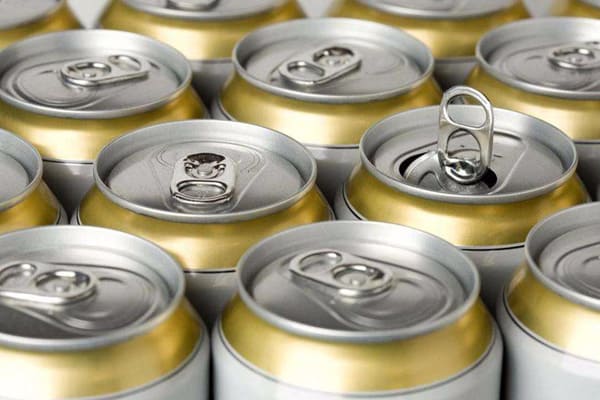
ประวัติกระป๋องอลูมิเนียม
ใน 20 ปี จาก 1975 ถึง 1995, จำนวนกระป๋องอลูมิเนียม (ความจุ 12 ออนซ์) ทำมาจาก 1 ปอนด์ของอะลูมิเนียมเพิ่มขึ้น 35%. ตามสถิติของบริษัท ALCOA ของอเมริกา, อลูมิเนียมที่จำเป็นต่อกระป๋องอลูมิเนียมทุกๆ 1,000 กระป๋องลดลงจาก 25.8 ปอนด์ค่ะ 1988 ถึง 22.5 ปอนด์ค่ะ 1998 และ 22.3 ปอนด์ค่ะ 2000.
ผู้ผลิตกระป๋องสัญชาติอเมริกันได้พัฒนาเครื่องจักรปิดผนึกและเทคโนโลยีอื่นๆ อย่างต่อเนื่อง, ดังนั้นความหนาของกระป๋องอลูมิเนียมในสหรัฐอเมริกาจึงลดลงอย่างมาก, จาก 0.343 มม. นิ้ว 1984 ถึง 0.285 มม. นิ้ว 1992 และ 0.259 มม. นิ้ว 1998.
โรงงานขายร้อนอลูมิเนียมฟอยล์หนา, อลูมิเนียมฟอยล์บาง ๆ, อลูมิเนียมฟอยล์บรรจุภัณฑ์ในครัวเรือน, ฟอยล์ห่ออาหาร, อลูมิเนียมฟอยล์ทางการแพทย์
เราใช้แท่งอลูมิเนียมบริสุทธิ์ในการผลิตแผ่นอลูมิเนียมขนาด 5 มม. พวกเขามาในความกว้างและอารมณ์ต่างๆ. พวกเขาไม่เพียง แต่เหมาะสําหรับเกรดทางทะเล, แต่ยังสําหรับการผลิตรถยนต์, ภาชนะรับความดัน, รวมถึงถังเก็บน้ํา, ถังน้ํามัน, และความกว้างสูงสุดที่เราสามารถผลิตได้คือ 3000 มม.
ความมุ่งมั่นของเราต่อคุณภาพ, ความหลากหลาย, และการปรับแต่งทำให้มั่นใจได้ว่าคุณจะพบขดลวดอลูมิเนียมฉนวนที่สมบูรณ์แบบสำหรับโครงการของคุณ.
แผ่นอลูมิเนียมนูนเป็นผลิตภัณฑ์อลูมิเนียมที่รีดบนพื้นฐานของแผ่นอลูมิเนียมบริสุทธิ์หรือแผ่นอลูมิเนียมอัลลอยด์เพื่อสร้างรูปแบบต่างๆบนพื้นผิว.
แถบอลูมิเนียมรีดเย็นเป็นแถบบาง ๆ ที่ทำจากโลหะผสมอลูมิเนียมที่ผ่านกระบวนการรีดเย็น. มันถูกใช้กันอย่างแพร่หลายในการบินและอวกาศ, การผลิตรถยนต์, วัสดุก่อสร้างและสาขาอื่น ๆ.
5005 แผ่นอลูมิเนียมเป็นแผ่นอลูมิเนียมความแข็งแรงปานกลาง, ซึ่งสามารถเข้าถึงความแข็งแรงปานกลางและสูงโดยการทํางานเย็น, และมีรูปร่างที่ดี
ฉบับที่ 52, ถนนตงหมิง, เจิ้งโจว, เหอหนาน, จีน
เหอหนาน หัวเว่ย อลูมิเนียม บจก., จํากัด, หนึ่งในผู้จัดจําหน่ายอลูมิเนียมที่ใหญ่ที่สุดในจีนเหอหนาน,เราก่อตั้งขึ้นในปี 2544 และเรามีประสบการณ์มากมายในการนําเข้าและส่งออกและผลิตภัณฑ์อลูมิเนียมคุณภาพสูง
จันทร์ – เสาร์, 8น. – 17.00 น.
วันอาทิตย์: ปิด
© ลิขสิทธิ์ © 2023 เหอหนานหัวเว่ยอลูมิเนียม จํากัด, จํากัด
ความคิดเห็นล่าสุด
ท่านที่รัก, Please offer your best FOB Prices specs are as under ALUMINIUM STRIP (AL=99.50% นาที) ขนาด:450 X32 X6 มม. หนึ่งของคุณ 570 TH-AW 1050 อา, QUANTITY=3400KG
สวัสดี, จะกรุณามอบสิ่งของดังนี้: คอยล์0,6x1250 (1000)mm EN AW-3105 5tons
สวัสดี, คุณสามารถให้ฉันแผ่นอลูมิเนียม? ตามหน้าที่ฉันต้องการ: 110มม. x 1700 มม. x 1700 มม 5083 เอช 111 - 21 pcs Next year planed is 177 พี ซี
บทความที่ดี. ฉันมีความยินดี, ฉันพบบทความนี้. หลายคนดูเหมือนจะ, ว่าพวกเขามีความรู้ที่ถูกต้องเกี่ยวกับเรื่องนี้, แต่บ่อยครั้งก็ไม่เป็นเช่นนั้น. ดังนั้นความประหลาดใจที่น่ายินดีของฉัน. ฉันประทับใจ. ฉันจะแนะนำที่นี่อย่างแน่นอนและกลับมาบ่อยขึ้น, เพื่อดูสิ่งใหม่ๆ.
ความต้องการของแถบอลูมิเนียม